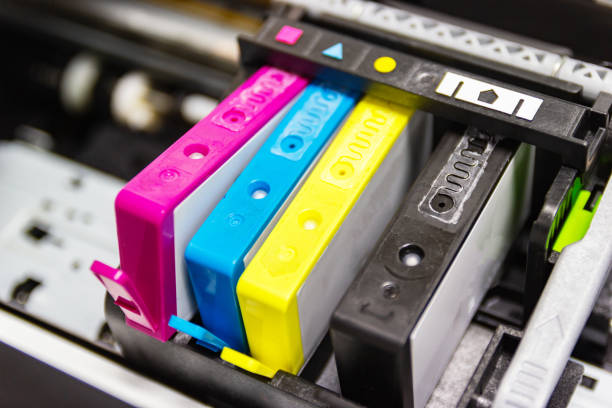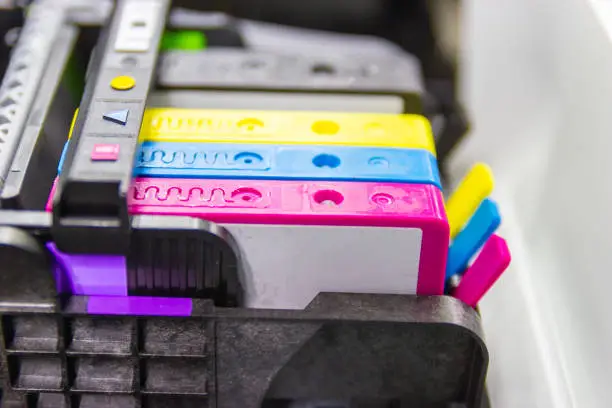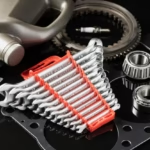Now Reading: Introduction to Ink Supply Systems: Key Components, Functionality, and Maintenance Tips
-
01
Introduction to Ink Supply Systems: Key Components, Functionality, and Maintenance Tips
Introduction to Ink Supply Systems: Key Components, Functionality, and Maintenance Tips

An essential component of any printing system is the ink supply system, which ensures a constant flow of ink from the source to the print head. Without it, a printer’s output would be dull and inconsistent. The primary goal of such a system is to deliver a steady stream of ink to the printer’s print head without interruptions or fluctuations, much like how candidates preparing for the PMA Long Course 156 apply date need a smooth and well-structured process to ensure they meet deadlines and submit their applications without delays.
Printing serves many purposes, but in most cases, the objective is to produce high-quality images, requiring a well-maintained ink supply system to avoid irregularities. Similarly, students preparing for standardized tests need reliable and structured study resources. Just as a steady ink flow ensures clear prints, students aiming for high scores can benefit from SAT prep free resources to maintain a consistent study routine and improve their test performance effectively. Well-designed systems—whether in printing or education—play a crucial role in ensuring successful results in both fields.
Definition and Purpose of the Ink Supply System
An ink supply system comprises a number of interconnected systems and components that transport ink to the printhead from a reservoir and maintain the proper distribution of ink throughout the course of printing operations. This system includes main components like pumps, tubes, and other connections, which play an important role in transporting the ink and applying the required pressure.
An ink supply system’s intended goal is to provide uniform output of print and also help in quality monitoring. By regulating the flow of ink, the system reduces the incidence of interruptions that result in defective prints due to under or over-saturation of ink. Also, a properly maintained ink supply system helps in the prevention of clogs and leaks of which each print will have the intended colors saturation, sharpness, and clarity. This uniformity is very important in the rapid printing operations, where quality assurance is vital
Why Hotstar is not Working with Your VPN (and How to Fix It)
Components of the Ink Supply System
The Ink Supply System incorporates components that help maintain coating uniformity and ink quality during operational procedures. These include ink pumps, tubes and connections, all fulfilling distinctive roles within the unit’s operations and performance.
- Ink Pumps
The Ink Supply System incorporates components that help maintain coating uniformity and ink quality during operational procedures. These include ink pumps, tubes and connections, all fulfilling distinctive roles within the unit’s operations and performance.
- Tubes
These are used as the conduits for ink flow from the ink reservoir to the print head. Reservoir tubes are also tough tubes which attract very little ink and are intended to work under great pressure. There maintenance however, is critical in order to avoid clogs and breaks in the continued supply of ink. - Connections
These are the parts that connect various parts of the ink supply system; pump, reservoir and tubes. To avoid loss of ink, these need to be attached properly so as not to leak and to ensure that ink supply systems do not suffer from pressure failure. Also, good connections improve the pressurization of the system to ensure that the user gets smooth, and non-interrupted printing. - Additional Components
In the opinion of certain manufacturers, other components such as filters may also be incorporated into the ink supply system. Such components improve the quality of ink further by getting rid of dirt and other unwanted materials prior to ink reaching the printhead. It is also common to find valves integrated into the system to control the pressure and the amount of ink which is dispensed, thereby improving the system as a whole.
The functions of these components are integrated together to achieve consistent ink flow which is essential to maintain the quality of the printouts during the printing process.
Role of the Ink Supply System in the Printing Process
The ink supply system, in this case, has a major impact on the quality of output prints as it supports ink flow consistently. This consistency is vital in reproducing superb quality prints and is disturbed by the following:
- Importance of Consistent Ink Flow
.Inking systems should be designed such that they are free from flaws and issues which would include streaks, color flooding, blurriness, uneven saturation, or an incomplete print. If the supply of the ink is interrupted for some reason, the completed work will no longer be up to the set standards. Maintaining a constant flow keeps the print head moving smoothly and laying down the right amount of ink at the right time. This is critical for such industries and applications that need a high degree of detail and accuracy e.g. professional photos and graphic designers. - Contributions to Efficiency and Quality
The printing process has been observed to be directly affected by the Ink Supply System. A single robust system will propagate minimum occurrence of system downtime, therefore optimizing the response times of ink-related issues. Due to the reduced number of clogs and other obstructions, interruptions of print jobs will also be reduced in frequency, if even stand-alone orientations shall be achieved allowing smoother runs.
The other thing is, the ink supply system makes sure that the colors of the printed canvas usually respect the designer’s color. Controlled ink flow makes sure that colors look better, brighter and are accurately reproduced which are essential in fulfilling the expectations of the customer and ensuring brand loyalty. The system accommodates different types of printing technologies including but not limited to digital and screen printing broadening the scope and flexibility for different projects.
In conclusion, the Ink Supply System is important in ensuring that the prints are of good quality without reproduction inconveniences during the printing process. Because of its consistency in ink flow, the printers are able to produce quality work in various areas.
Troubleshooting Common Ink Supply System Issues
With all the efforts made in developing Ink Supply System, nonetheless challenges exist which undermine printing quality and efficiency. It is important to note that such hindrances should be addressed as soon as they are noticed so as to guarantee maximum performance. Below are some typical problems together with the ways of solving them and maintenance procedures:
- Clogs
Identification: The most common reason for low flow and poor quality prints in an ink supply unit is because of the clogs. These can manifest through skipping, random stripes appearing or even through having blank areas on the piece being printed.
Solutions:- Routine Cleanings: Schedule periodic cleanings of the print heads and cylinders of each ink line against any blockage. Use the cleaner and instructions as recommended by the manufacturers.
- Purge the Entire System: Whenever obstruction does not go away after cleaning the given nozzle, it would be suggested to purge all of the ink system with cleaning fluid.
- Defeat Bubbles: Make sure that sufficient ink is available and that such elements do not go unnoticed, as small quantities of ink promote a low circulation and thus the emergence of air bubbles which actively contribute to clogging.
- Leaks
Identification: The ink can get lost due to a leak either around the many connection points or somewhere along the tubes. These can be indicated through ink that has pooled near the printer or ink that has a dark shade on the tubes.
Solutions:- Regular Inspections: Make it a point to check all connections once in a while. Loose fittings tend to leak, but are easily tightened to avoid such problems.
- Replacements of Defective Items: Sealings, joints, and tubes must not be left in the system if they exhibit signs of wear, damage or deterioration of any sort.
- Future Materials: Using good quality tubes and connectors will help prevent leakage.
- Pressure Drops
Identification: The sudden reduction of the pressure of the ink leads to imbalance and unsatisfactory delivery of ink and a broad range of colors. It may be ascertained by observing and looking at how printing is going all through the operation.
Solutions:
- Inspect Pumps: Scheduling an inspection of parameters is also wise since it is quite normal to find cases where the ink pumps do not function at all or have been worn out over time. In this scenario, a replacement may be necessary.
- Check for Obstructions: Eliminate water from the conditions that would produce and sustain a vacuum in the pipes. Troubleshoot and remove any identified barriers during periodic checks on the equipment.
- Monitor Air Traps: Sealed spaces in the work between different components surrounded by any inks may result in the formation of gas bubbles or air cavities which when in large quantities will cause pressure drops; if pressure decreases, re-bleed the entire system.
Maintenance Tips for Optimizing the Ink Supply System
- Routine Inspections: Systematic checking of the complete framework of the ink supply systems in order to monitor areas of wear or the onset of a situation that can be prevented from materializing will also enhance productivity.
- Maintain Proper Ink Levels. It is integral to ensure that the tanks do not run dry as this can lead to the possibility of introducing air into the DSP4083 system.
- Environment Control. Refrain from using inks which may be inappropriate for the specific printing conditions. Heat and moisture above standard levels tend to alter ink thickness and consistency.
Once these problems are considered beforehand, it is possible to prevent creating obstacles within the operation of the Ink Supply System and perform it avoiding any quality glitches at the workpiece and any excessive inoperability.
Conclusion
A proper Ink Supply System must be in order to produce consistent high-quality prints. Maintenance of uninterrupted flow of ink helps to avoid clogs and leaks which could lower the quality of the produced prints. Good practices such as carrying out regular inspections and cleaning are able to extend and improve the functioning of the ink supply system.
Engaging in the aforementioned practices will assist you in attaining consistent printing outcomes which will make you produce beautiful, professional-looking prints on all occasions.
Leave a reply
You must be logged in to post a comment.



































Pingback: Understanding DTF Printing: Ink Cartridges, Ink Types, Printer Compatibility, and More - PureTechZone.com